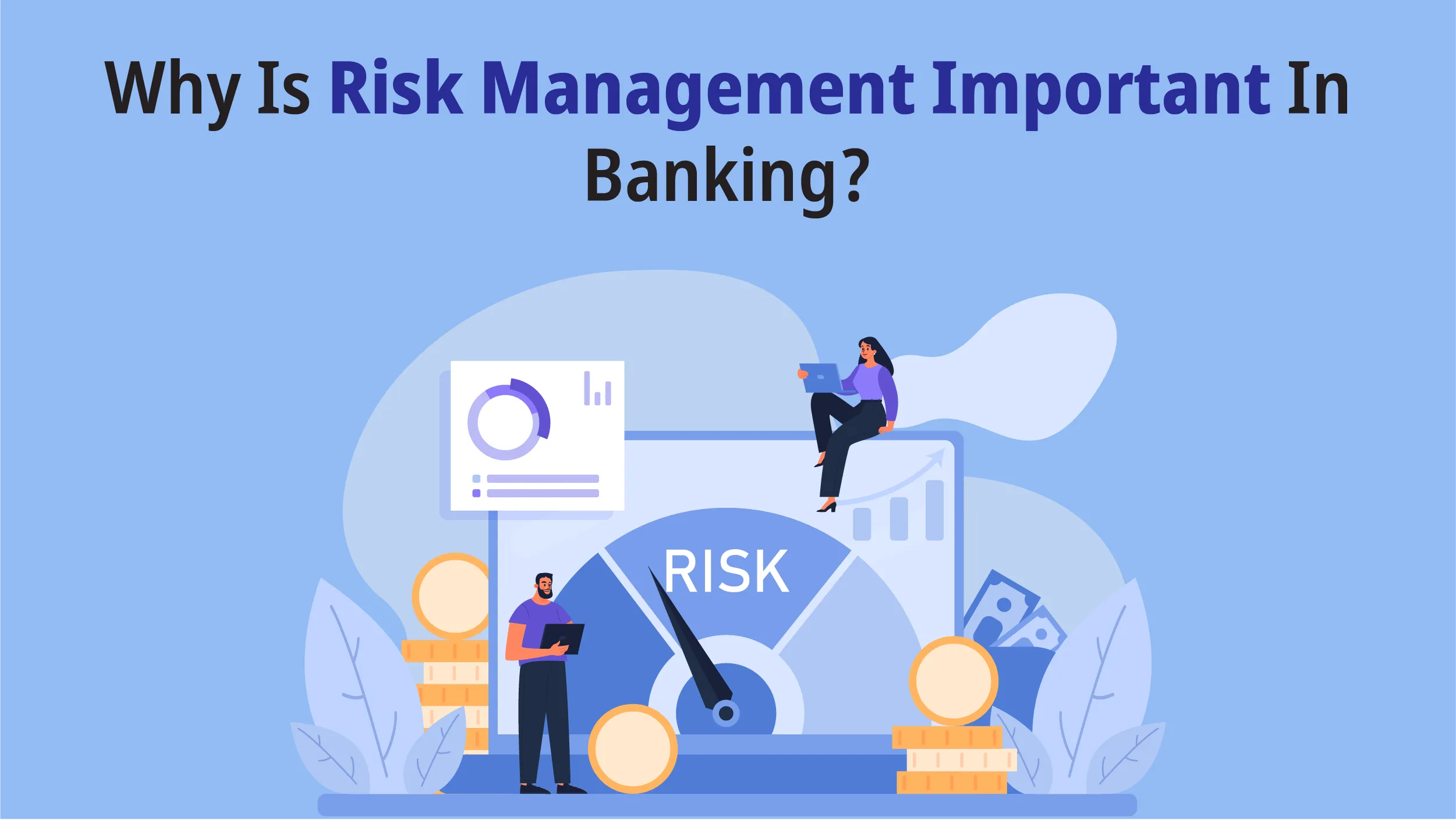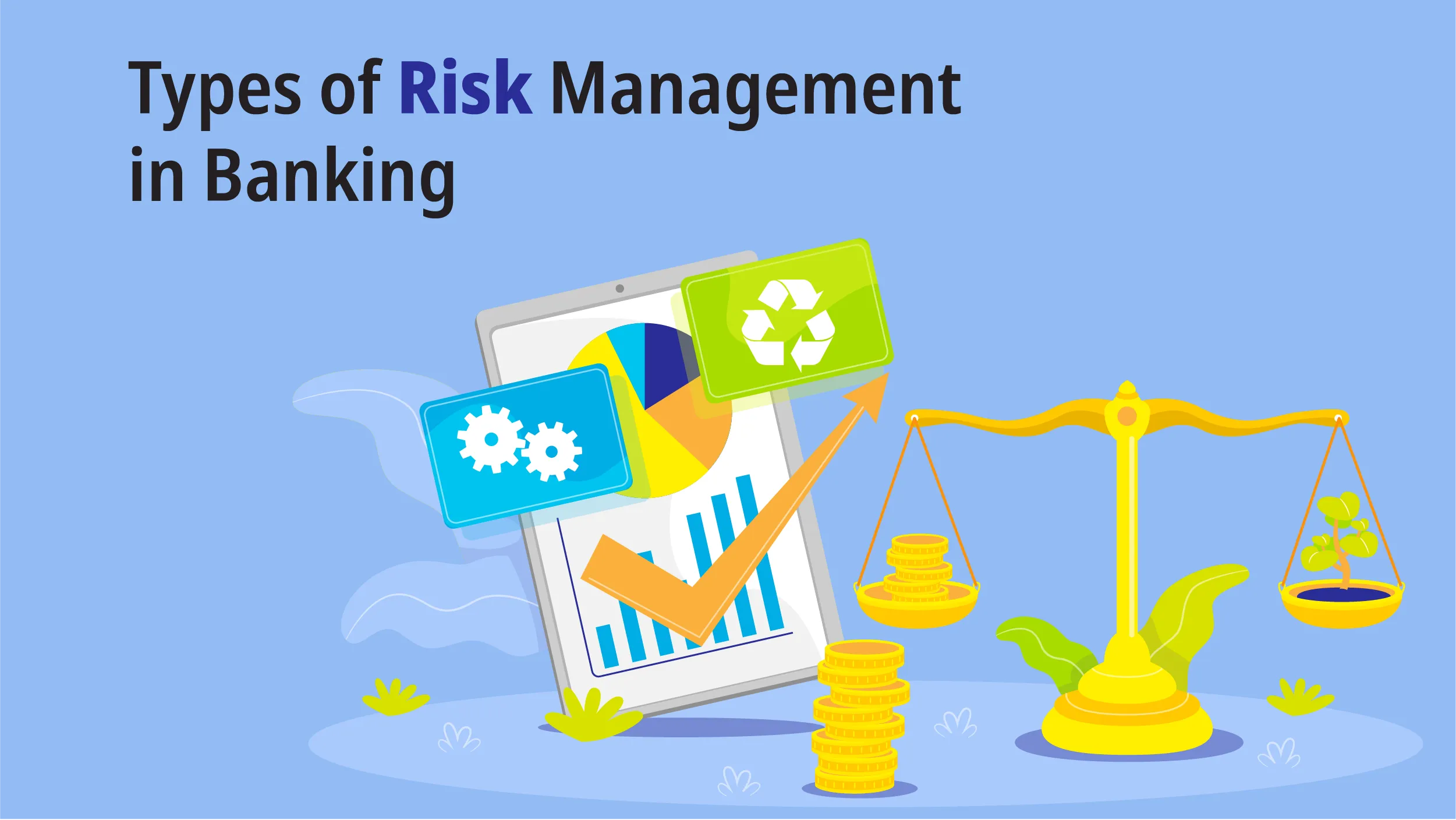Like any other institution, banks are vulnerable to several risks. Studies show that 41% of respondents in the banking sector boosted their investments by up to 10% in risk management technologies in 2022. Nonetheless, the risks are heavier in the banking sector than they are in most other businesses due to the significance of the industry and the government’s involvement in risk management. There are many threats that a bank could face, therefore it’s important to know how banks handle risk. This is where risk management in banking comes into play. Let’s learn more.
What is Risk Management In Banking?
The process through which financial organizations recognize, evaluate, and reduce the different risks they encounter in their daily operations is known as risk management in banking. Credit risk, market risk, operational risk, and compliance risk are just a few of the many hazards to which banks are exposed and which can have an effect on their financial stability and profitability. To guarantee a bank’s safety and soundness and to safeguard the interests of depositors and other stakeholders, effective risk management is essential.
Simply put, it is all about playing it safe while making big moves. Imagine a tightrope walker balancing on a high wire – that’s a bank navigating its operational and investment decisions. This process involves identifying potential threats, evaluating their impact, and taking steps to minimize the chances of something going wrong. Given that banks handle other people’s money, getting this right is absolutely critical.
Also Read: Predictive Analytics In Banking: What it is & Why it Matters?
Why Is Risk Management Important In Banking?

The following are some reasons why risk management in banking is important:
- Stable Financial Condition: A bank is always exposed to several risks, whether regarding credit, markets, or operations. It is through effective risk management that banks can identify and assess these risks, taking relevant measures to mitigate them. Effective management of the various risks involved makes the banks financially more stable and reduces the possibility of losses that may arise.
- Regulatory Compliance: Banks operate in a heavily regulated environment. Regulatory authorities want banks to have in place sound risk management frameworks that assure the safety and soundness of the fintech system. This might most likely lead to a breach of customers’ trust and confidence, which is very important to investors and regulators.
- Stakeholder Protection: It should be the duty of the bank to act in the best interests of all stakeholders, be they depositors, shareholders, or employees. Banks, through proper risk management practices, can mitigate or even totally avoid the impact of such risks on their stakeholders, thereby protecting the deposits of customers, maintaining shareholder value, and ensuring employment stability.
- Better Decision-Making and Resource Allocation: Proper risk management makes the banks more informed and helps them attribute the right resources to the right places. Identification and management of risks optimize the risk-return trade-off of the bank toward improved profitability. This shall comprise prudent lending decisions, management of market exposures, and control of operational risks that might result in financial losses.
- Reputation Protection: The reputation of a bank is an asset, whereby a poor risk management practice shall attract bad publicity and loss of public confidence in the customers.
- Model Risks: Given banks’ growing reliance on models, model risk needs to be better understood and managed. The usage of models has increased due to developments in computers, modeling, and algorithms; yet, mistakes can result in poor decision-making and higher risks. A report by McKinsey noted some interesting facts like a $6 billion loss at a US bank attributed to value-at-risk model risk and a $4 billion loss in an Asia-Pacific bank resulting from the erroneous application of interest-rate models. These are just two examples of the losses some banks have suffered as a result of model risk.
Types of Risk Management in Banking

Risk management in banking encompasses several threat areas that require careful consideration. It’s not just about the variety of risks but also the level of control an organization can exert over these factors.
1. Credit Risk: Credit risk is one of the most prevalent risks for banks. It refers to the risk of a bank lending money to a customer who may not repay it, potentially reducing the bank’s assets and incurring additional costs in recovery efforts.
Mitigating Credit Risk: To mitigate credit risk, banks need to understand their financial position and the specific financial history and behavior of each customer. Tailoring lending agreements based on risk assessment can help manage exposure.
2. Market Risk: Also known as systematic risk, market risk is the potential for external events—such as economic downturns or industry collapses—to negatively impact a bank’s investments.
Mitigating Market Risk: Strategies include diversifying investment portfolios, focusing on staple industries, adopting long-term investment strategies, and maintaining liquidity.
3. Operational Risk: Operational risk arises from day-to-day bank operations, such as errors due to inadequate employee training or IT infrastructure failures. Cybersecurity risk is a significant component of operational risk.
Mitigating Operational Risk: Measures include hiring and training competent staff, securing IT infrastructure, and staying updated on cybersecurity threats. Automation of processes and continuous feedback loops can reduce human errors.
4. Reputational Risk: Reputational risk arises when a bank’s actions or associations damage its reputation, potentially leading to a loss of customer trust and business.
Mitigating Reputational Risk: Banks can define ethical values, train employees accordingly, monitor social media and news, and prepare contingency plans for rapid and transparent communication in case of incidents.
5. Liquidity Risk: Liquidity risk refers to the possibility that a bank may not have enough liquid assets to meet short-term obligations, especially during a bank run or financial crisis.
Mitigating Liquidity Risk: Strategies include cash flow forecasting, maintaining a contingency funding plan, and conducting stress tests to simulate crisis scenarios.
6. Compliance Risk: Compliance risk involves the potential penalties and reputational damage a bank faces for not complying with regulatory requirements.
Mitigating Compliance Risk: Banks should have knowledgeable compliance officers, automate processes where possible, and embed compliance into the organizational culture to ensure all employees understand and adhere to regulations.
How Does Risk Management In Banking Work?
Managing risk in banking isn’t just a single step—it’s a comprehensive process involving multiple critical components. Here’s a breakdown of the six key elements that form the backbone of risk management in the banking sector:
- Identification: First things first, you need to know what you’re up against. This step involves defining the nature of risks, pinpointing their origins, and understanding why they pose a threat to the bank. Whether it’s fraud, market volatility, or operational hiccups, identifying these risks is the foundation of effective management.
- Assessment and Analysis: Once risks are identified, the next step is evaluating how likely they are to occur and how severe their impact might be. This helps the bank prioritize which risks need the most attention and resources. It’s about playing the odds and preparing for the worst-case scenarios.
- Mitigation: Mitigation involves designing and implementing policies and processes to reduce the likelihood of risks turning into actual threats. It’s like building a fortress around your assets, ensuring that even if a threat materializes, the damage is minimized.
- Monitoring: Monitoring involves continuously gathering data on threat prevention and incident response to evaluate how well the risk management strategy is working. This also includes researching emerging risk trends to keep the bank’s defenses updated and ready for new challenges.
- Cooperation: Risk management isn’t a solo endeavor. Establishing relationships between different risk areas and mitigation strategies across the bank creates a more centralized and coordinated threat response system. It’s about ensuring all parts of the bank are working together seamlessly to tackle risks.
- Reporting: Finally, documenting and reviewing information related to risk management efforts is crucial. Reporting helps gauge the effectiveness of the strategies in place and track changes in the bank’s overall risk profile over time. It’s the feedback loop that drives continuous improvement in risk management practices.
Future Outlook
It is anticipated that by 2025, risk management in banking will play a major role in strategy planning, business head collaboration, and the development of a center of excellence for analytics and impartial decision-making. Financial institutions will value it for its capacity to manage various risk types, get ready for new rules, and enhance client experiences. Additionally, the risk function will start to set banks apart and contribute to their success. That being said, this state can only be attained by individuals who undergo a complete metamorphosis.




